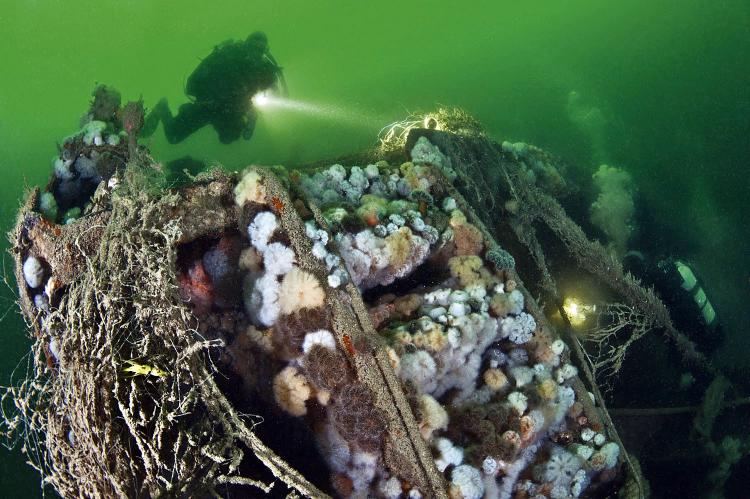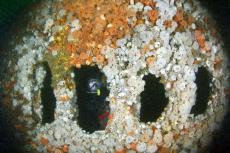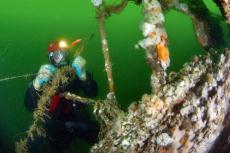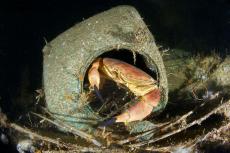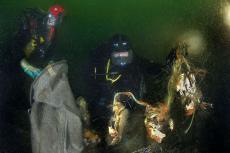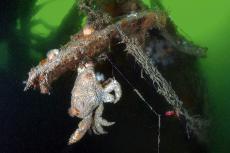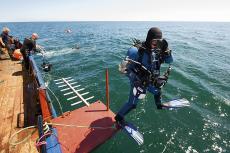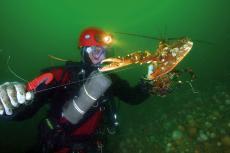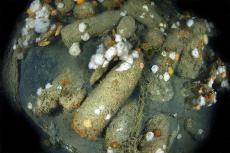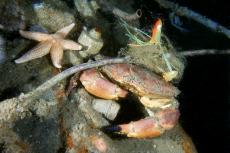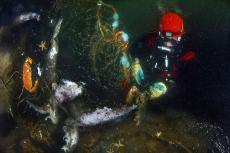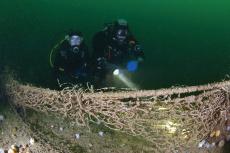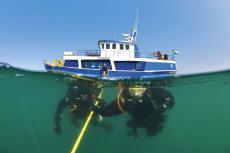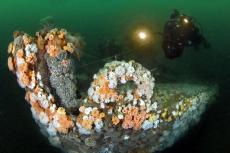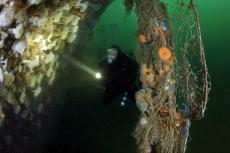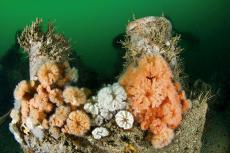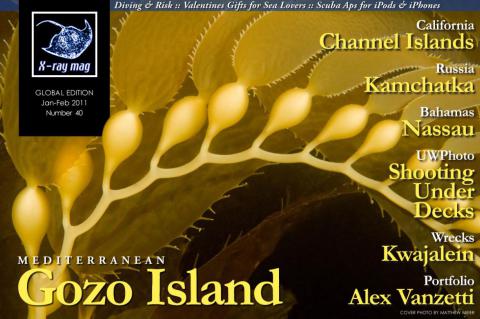Ghostfishing
It is the nightmare of every diver who dives the Dutch North Sea—getting entangled in a fishing line of old net, unable to free yourself. The Dutch wrecks are becoming an ever popular destination for both the fishing and diving industry. A threat to both, fishing boats and anglers can lose their nets and lines on wrecks, and divers can lose their lives.
Tags & Taxonomy
Diving the North Sea is always an adventure. Even though the weather can be unpredictable, more and more divers have started to explore the wreck sites each year. But wreck diving can be dangerous, too. I have dived the wrecks of my North Sea for over a decade now, and I have seen the number of lines, hooks, sinkers and nets explode. On several occasions, my slow swimming exploration over a wreck was suddenly interrupted—something held me back. It could be a line, a line and hook, or a fine-mesh net that was almost invisible. The only solution was getting out a sharp knife and cutting the lines or net—a task that can be daunting under low visibility and in a tidal current. Most of the time, I needed the help of my buddy to survive.
As cod and flatfish are becoming scarce in the Netherlands, an ever increasing number of people try to make extra money by fishing on the wrecks. For them, there is no quota, as officially, they are not professional fishermen. At a profit of over seven euro’s per kilo, wreck fishing is a great hobby and the large boats that leave almost every weekday are crowded. The catches are mostly composed of undersized cod that are not even sexually mature, which goes to restaurants and are also sold privately.
But angling is not only a threat to the fish. Every year, an estimated 100,000kg of poisonous lead are left behind in the sea, as many anglers lose their lines, sinkers and hooks. The professional fishing industry fishes with the nets as well, and use standing nets and dragnets on the sandy floor around the wrecks, which are occasionally left behind, as one wreck or another refuses to let them go. None of those visitors have a clue as to what is going on underwater once they have departed.
When they head back to port, a tragedy unfolds. Every lost net, every lost line, keeps fishing, sometimes for decades. Fish get caught, starve, die, and are approached by ...
(...)
Download the full article ⬇︎
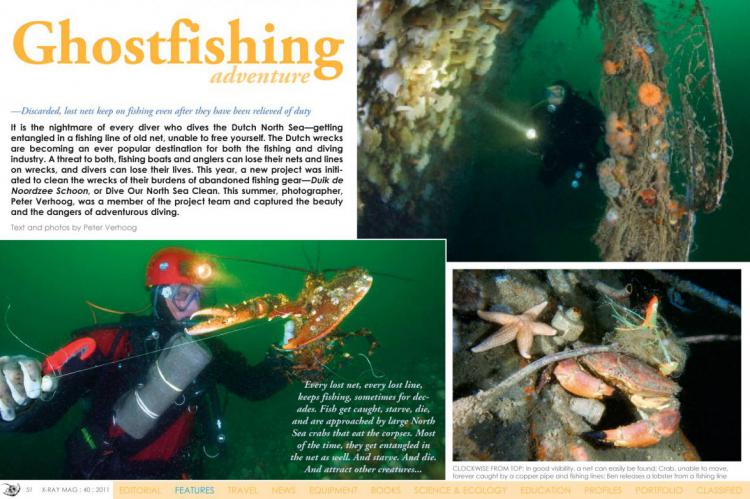
Originally published
X-Ray Mag #40
Malta’s Gozo Island (Mediterranean) by Scott Bennett | Wrecks on Kwajalein atoll | Valentines Gifts for Sea Lovers edited by Gunild Symes & Catherine GS Lim | Kamchatka, Russia by Andrea Bizyukin, PhD | Dive Medicine: Diving & Risk by Dr Carl Edmonds | Ghostfishing The Netherlands by Peter Verhoog | Portfolio: Alex Vanzetti by Gunild Symes | Nassau, Bahamas: Hollywood Underwater by Millis Keegan | The Apps Are Coming by Peter Symes | Channel Islands, California by Matthew Meier | UW Photo: Shooting Below Decks by Joseph Dovala


